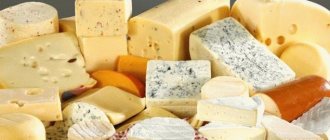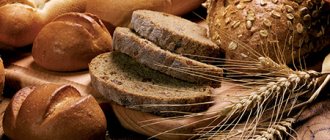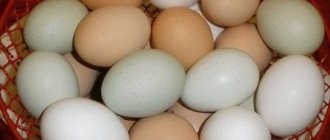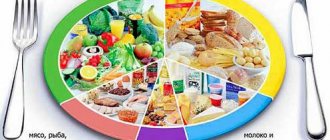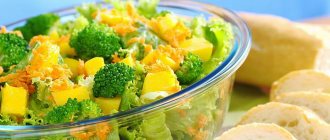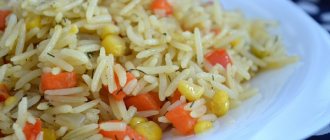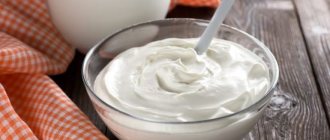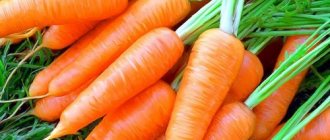Pancreatitis is an inflammation of the pancreas that interferes with the healthy digestive process and normal energy metabolism in the body. Drug treatment and a gentle protein diet that contains a minimum of carbohydrates and almost completely eliminates fats will help to cope with the disease. Since dried fruits are a storehouse of vitamins and nutrients, they can be consumed by patients with pancreatitis, but with some reservations.
What are dried fruits?
Dried fruits are fruits or berries that are 80% dehydrated by drying. You can dry them in several ways: using a dehydrator (as in fruit and vegetable factories), oven, oven, or natural method. They are an integral part of the diet as they are rich in vitamins and minerals. But due to the fact that they contain more carbohydrates and sugar than fresh fruits, their intake should be limited if the pancreas has ceased to function normally.
So, in acute forms of the disease, eating dried fruits is strictly prohibited. At the stage of remission (in the chronic form), it is allowed to prepare decoctions from them. Dried fruits for pancreatitis in their pure form should also be limited, since the diseased gland cannot produce enough insulin to break down sugar.
Allowed
For pancreatitis during the period of remission, it is allowed to eat apples, prunes, dried apricots and pears. These products are safe for inflammation of the pancreas. They have a minimal number of calories, but contain a large amount of useful vitamins. Prunes help cleanse the intestines and normalize the digestion process, which is important for pancreatitis.
What are the benefits of dried fruits?
A strict diet for an inflammatory disease affects the general condition of the body. Reducing fats and carbohydrates in food is fraught with a lack of vital vitamins and amino acids, which entails a number of consequences, both local (flatulence, digestive disorders) and general (vitaminosis, apathy). Therefore, after eliminating acute symptoms, you need to carefully replenish the lack of nutrients in the body. Fruits and vegetables will help with this, but not all of them are allowed in the diet for pancreatitis in their raw form (for example, you cannot eat fresh sour apples, but dried or baked ones are welcome). Therefore, decoctions of dried fruits, containing the same amount of micro- and macroelements as fresh fruits, will be a great help.
Harmful properties of dried apricots for pancreatitis and diabetes.
Any medicine can be poisonous if taken incorrectly or in high doses. The same thing happens with dried apricots.
For example, the same carotene that is so beneficial for vision is very poorly absorbed in cases of thyroid disorders.
For pancreatitis, dried apricots, or rather its laxative properties, are harmful. Therefore, when dealing with pancreatitis, you need to be careful with dried apricots.
Dried apricots can also be harmful for diabetes due to their beneficial properties due to their high sucrose content. Therefore, doctors recommend that people with greater weight and diabetes mellitus consume less sweet varieties of dried apricots.
For stomach ulcers, gastritis and other gastrointestinal diseases, dried apricots should be eaten with caution.
The rules for eating dried apricots for pancreatitis are similar to the rules for gastrointestinal diseases, so the next section will be useful not only for pancreatitis.
What dried fruits are not recommended for consumption?
After diagnosing pancreatitis, patients should avoid dried fruits such as:
- figs;
- dates;
- dried apricots;
- bananas;
- raisin.
Since they contain the highest concentration of carbohydrates, which should be limited in a protein-friendly diet (this is especially true for figs and dried apricots). They contain a fairly large mass portion of sugar and vegetable oils, which can cause digestive failure.
What dried fruits can and cannot be included in the diet for pancreatitis?
What dried fruits are allowed for pancreas problems, and is it possible to drink dried fruit compote for pancreatitis? During stable remission of a chronic form of pathology, it is recommended to drink decoctions and uzvar.
Regarding the use of dried fruits as an independent dish, their quantity should be limited, since the diseased gland is not able to produce insulin in the amount necessary for the complete breakdown of sugar, so the likelihood of developing diabetes increases several times.
It should be immediately noted that if persistent remission is observed, then the patient’s diet can be supplemented with dishes with dried fruits. What dried fruits are allowed for pancreatitis can be seen in the table below:
| Healthy dried fruits | Harmful dried fruits | Controversial dried fruits |
| Pears Apples Prunes Rose hips | Bananas Figs Dates Peach Barberry Melon Pineapple | Raisins Dried apricots |
Dried fruits allowed for pancreatitis help normalize intestinal processes due to their low calorie content and beneficial substances.
With regard to dried fruits from the prohibited list, their ban is explained by the presence of a high concentration of carbohydrates, which are extremely undesirable in a protein diet. Dried apricots and figs contain a lot of vegetable oils and sugar, which can lead to digestive problems.
Apples
Dried apples are in no way inferior to fresh fruits in their usefulness, and in some cases even surpass them in some ways. Apple drying is completely safe for patients with severe pathologies, including acute and chronic pancreatitis.
Dried apple pieces are not capable of irritating the mucous membranes of the gastrointestinal tract and do not create additional stress on the diseased pancreas. The benefits of them are obvious:
- Improves digestion.
- Helps digestion of food.
- Gently cleanse the body.
- Removes toxins.
- Accelerate tissue regeneration.
- They have an antioxidant effect.
They contain a sufficient amount of:
- magnesium;
- potassium;
- gland;
- vitamins E, C and K;
- B vitamins.
Potassium and magnesium are essential for diseases of the cardiovascular system, and iron prevents the development of anemia and improves the supply of oxygen to all cells of the body.
Pears
Is it possible to eat dried pear fruits with pancreatitis? Experts answer that it is not only possible, but also necessary. They contain many tannins, which have a healing effect on the pancreas, thereby promoting its rapid recovery.
Dried pear has the following properties:
- Antibacterial.
- Anti-inflammatory.
In addition, it contributes to:
- Normalization of metabolism.
- Strengthening the immune system.
- Accelerates the regeneration of damaged tissues.
- Improving the central nervous system.
- Improving the functioning of the heart and blood vessels.
- Activation of hematopoietic processes.
Prunes
Prune berries have a high laxative effect, thereby helping to quickly cleanse the intestines, especially with constipation. It is enough to eat a few prunes to eliminate such an unpleasant phenomenon as bloating, which is often observed in patients with pancreatitis. In addition, prunes have other healing properties:
- Diuretic.
- Choleretic.
- Immunomodulatory.
The diuretic effect of prunes helps reduce high blood pressure and inflammation in the kidneys, bladder and the rest of the urinary system.
The fact that prunes are a natural immunomodulator has been known to medicine for a long time. When consuming this fruit, the body's resistance against various infections increases.
Thanks to the choleretic effect, stagnation of bile in the gallbladder is eliminated, which is very important for cholecystitis and pancreatitis.
Despite the beneficial properties of prunes, they should be added to dishes in moderation due to the following points:
- Is high in calories.
- Able to increase blood sugar.
An acceptable option is 4-8 pieces of dried (not smoked) prunes per day. However, you should not eat it every day, and when preparing compote, sugar is not added.
Dried apricots and raisins
Patients with pancreatitis often ask doctors whether it is possible to eat dried apricots or grapes with pancreatitis? There is no clear answer to this question. The fact is that candied fruits for pancreatitis, such as raisins and dried apricots, are a controversial issue. Some doctors and herbalists believe that they can be used for problems with the pancreas, others are categorically against their presence.
This is explained by the fact that dried apricots and raisins can harm the diseased gland, but on the other hand, they contain substances that a weakened body needs.
Therefore, the “golden” mean should be observed. In case of stable remission of pancreatitis, dried apricots (no more than 3-4 pieces) are used in pureed form to prepare compotes. However, it cannot be added to porridges and casseroles. When used correctly, dried apricot improves the functioning of the heart, prevents the formation of blood clots and removes toxic substances.
The situation is similar with raisins. With a stable decrease in the manifestations of pancreatitis, it can be added to dietary dishes (no more than one handful). Raisins have a beneficial effect on work:
- Hearts.
- Immune system.
- Thyroid gland.
The doctor considers the possibility of consuming raisins for pancreatitis on an individual basis due to the high glucose content.
Recipes for dried fruit compotes for pancreatitis
The general rule is that you cannot sweeten dried fruit compote, because dried fruits and berries already contain a lot of sugar.
Everyone from childhood is familiar with the taste of uzvar, which was served in preschool institutions and schools. And not in vain, since for both a sick and a healthy person, the drink provides maximum benefits with minimal costs to the body for its absorption.
The recipe is quite simple: take a handful of dried apples, pears and prunes and add 3-4 liters of distilled water. Cook after boiling over low heat for 10-20 minutes. You can add a very useful ingredient - dried rose hips (half a glass), which contains almost no carbohydrates, but is a powerful stimulant of the human immune system. There are many variations of uzvar, when one or two components are omitted, or they are replaced with dried berries - raspberries, strawberries, blueberries, lingonberries.
Pancreatitis forces a person to abandon their usual diet for a long time. Strict dietary restrictions lead, at a minimum, to vitamin deficiency. Decoctions of dried fruits and berries, which increase immunity and do not overload the inflamed gland, can help with this. They should be consumed only after the acute form of the disease has subsided.
Dried apricots and acute pancreatitis
In the event of the development of acute pancreatitis or severe exacerbation of the chronic version of this disease, dried apricots are allowed to be used to make some drinks already in the initial period of diet therapy (after forced life-saving fasting). It is not only nutritious, but also, due to the ratio of potassium and sodium, has some decongestant effect. Delicious compotes and infusions are made from dried apricots. But these drinks differ in some features:
- dried fruits must be wiped;
- if patients have profuse diarrhea, sometimes they are even filtered to completely get rid of the fiber-rich pulp;
- Due to the content of easily absorbed carbohydrates, which unnecessarily load the inflamed organ, sugar is not added to drinks at all or sweeteners are used (xylitol, etc.).
It is better not to eat dried apricots in any other form for now. After all, up to 18 g of coarse ballast substances are found in it, which activate the motor function of the intestine. Increased peristalsis leads to serious diarrhea, excessive gas formation, and intestinal colic.
Dried apricots and chronic pancreatitis
During dietary rehabilitation of patients, pureed dried apricots can be a full-fledged ingredient in permitted sauces or fruit sauces. It is especially necessary for those patients who, due to a strict diet, have constipation and/or have a lack of potassium.
The onset of remission allows you to increase the list of acceptable dishes with dried apricots. It can be found in porridges, casseroles, meat dishes, pilaf, pies and sauces. But this “liberty” is undesirable for patients whose glucose metabolism is impaired due to pancreatitis (after all, up to 80-84% of sugars can be present in certain varieties of dried apricots).
Useful qualities
It is not for nothing that dried apricots are included in a variety of healing tables. Valuable dried fruit:
- stabilizes myocardial function (after all, 100 g of dried apricots contain 1717 mg of potassium and 105 mg of magnesium);
- enriches the body with dietary iron (3.2 mg per 100 g) and calcium (160 mg per 100 g);
- is a natural diuretic;
- prevents thrombosis;
- removes toxins (thanks to its pectins).
Summary
The maximum daily portion of dried apricots for chronic pancreatitis:
- exacerbation phase - the amount of dried apricots is determined individually;
- phase of stable remission - 40 - 80 g of dried apricots (the amount depends on the tolerance of the dried fruit and the patient’s weight, because dried apricots are high-calorie).
In acute pancreatitis, the amount of dried apricots is determined individually.
| Squirrels | 5.2 g |
| Carbohydrates | 55.0 g |
| Fats | 0.0 g |
| Calorie content | 234.0 kcal per 100 grams |
Dietary Compliance Score for Chronic Pancreatitis: 9.0
Rating of product suitability for nutrition during acute pancreatitis: 9.0
C, B1, B2, B5, A, E, beta-carotene, PP
potassium, magnesium, phosphorus, iron, calcium, sodium
Negative impact
If dried apricots are eaten in large quantities, the body is harmed. This is due to the high sucrose content - 80% in dried fruits.
To process such a volume of sweets, an appropriate amount of insulin is required. With pancreatitis, the secretory function of the pancreas is reduced, due to which the hormone insulin is produced in smaller quantities, as a result, blood sugar levels increase, leading to diabetes.
Without reducing blood sugar levels, the patient forces the gland to work at its limit, adding new diseases to the list of already established diagnoses. It is recommended to use less sweet varieties of dried apricots.
Laxative properties, often beneficial, have a negative effect in pancreatitis. Be careful and don't go overboard with the quantity. For diseases of the gastrointestinal tract accompanying pancreatitis (ulcers, gastritis, etc.), it is recommended to limit the consumption of dried fruits. Possible harm is caused by the fiber contained in dried apricots in a fair amount; it can overload the gland.
Recipes for dishes and drinks with dried apricots for pancreatitis
You can prepare many dietary dishes from dried apricots. These can be jelly, compotes, jellies, gravies. Dried fruits are often added to porridges, salads, meat rolls, cottage cheese casseroles and cheesecakes, enriching them with substances beneficial to the pancreas.
Compote
To prepare compote from dried apricots you will need 2 liters of water, 230 g of dried fruits and 1 sweet apple. Apricots should be soaked in hot water for 10-15 minutes, then rinsed each piece in warm water and cut into 2-3 pieces.
During the period of acute pancreatitis, compote can be drunk by straining the liquid through a sieve.
A medium-sized apple needs to be washed and cut into slices, removing the core and skin. Place the prepared products in a saucepan and add water. Bring the dried apricot compote to a boil and cook for 10 minutes. Before drinking, cool the drink to +30°C. Sugar is not added to this drink, because... There is a lot of it in dried apricots.
During the period of acute pancreatitis, compote can be drunk by straining the liquid through a sieve. During the dormant period of a chronic disease, it is consumed together with the pulp, mashed into a paste.
Dessert
A good dessert made from orange dried fruits is mousse. To prepare 2 servings, you will need 40-50 g of dried apricots, 2 gelatin plates, 1.5 cups of water and 0.5 cup of freshly squeezed orange juice.
The effect of dried apricots on the disease
Is it possible to eat dried apricots with pancreatitis? If you have pancreatitis, you can eat dried fruits. One of them is dried apricots or dried apricots. Just don’t forget that at different phases of the disease there are certain recommendations regarding a given fetus. What kind of advice are these?
Excluding absolutely all foods from the diet is necessary during the acute period of illness. It is advisable to make the first few days unloading for the pancreas. It is for this reason that it is better to make decoctions or compotes without sugar from dried fruits, possibly with the addition of fructose or other substitutes. The pulp itself cannot be eaten.
Such restrictions are required only during exacerbation of the disease. This is due to the fact that the fiber contained in dried apricots affects the motor activity of the intestinal tract. Because of this, there are:
- deterioration of condition;
- colic;
- indigestion and flatulence.
Is it possible to eat dried apricots for chronic pancreatitis? Over time, the source of inflammation subsides, and more and more dishes are added to the menu. It is allowed to make jelly and dried apricot jelly. Fruit purees are acceptable. Before adding, the dried fruit is steamed and rubbed through a sieve.
If it is not possible to complete all these stages of preparation, a jar of baby food will do. After all, dried apricots are even indicated for chronic pancreatitis. It has many advantages, including decongestant and diuretic effects. In addition, dried fruit helps well against constipation and lack of microelements.
The product in the remission stage can be consumed either in a soaked form or as part of various culinary delights. Here's a short list:
- bakery;
- dried apricots baked with apples;
- Dessert;
- sauces;
- gravies;
- porridge;
- pilaf;
- casseroles;
- meat.
Chronic course of the disease
The onset of remission allows you to use dried apricots in various dishes. Its use is especially useful if there is a problem of constipation after a strict diet or there is a lack of potassium in the body. Dried fruits are added to casseroles, porridges, meat dishes, pilaf, and baked goods. Dried apricots go well with cottage cheese and fermented milk products.
You can eat up to 80 g per day, but it is better to select the dose individually, focusing on sensations.
Unfortunately, if glucose metabolism is disrupted, dried apricots will have to be abandoned.
Who, when and how much can eat dried apricots for pancreatitis.
Dried apricots for pancreatitis can be eaten under certain conditions:
- - eating dried apricots for pancreatitis during an exacerbation is strictly prohibited;
- — you can’t eat dried apricots for pancreatitis on an empty stomach;
- - Dried apricots for pancreatitis can only be eaten during stable remission (disease subsidence)
- — for pancreatitis, dried apricots can be eaten no more than 2-3 pieces at a time.
- - if you have pancreatitis, you should not eat sour dried apricots, because they quickly disrupt the already weakened pancreatic intestines.
You cannot completely give up dried apricots, unless the body is in serious condition. In all other cases, eating dried apricots is not only possible, but also healthy, the main thing is to choose the right doses and not on an empty stomach.
Eating dried apricots for inflammation of the pancreas
By adhering to certain rules, the patient can reduce the risk of possible negative effects and use the food product to the maximum, receiving the necessary vitamins and microelements. Dried apricots for pancreatitis are taken outside the period of exacerbations; it is better to limit the intake to 2-5 pieces.
Choose a variety of dried fruit that is neither sweet nor sour. Sweet will affect blood sugar levels, and sour will increase the load on the gastrointestinal tract, already weakened by the disease.
It is not recommended to eat dried fruits on an empty stomach. You should have a snack beforehand. There is no need to completely exclude dried apricots from the diet; they are full of beneficial properties necessary for pancreatitis. When choosing dried apricots, pay attention to the appearance. Dried apricots are supposed to be matte, wrinkled, fairly orange, and not transparent.
To restore the nutritional properties, dried apricots are soaked in hot water or apple juice. After soaking, it is used as an ingredient for various dishes, stewed with meat, rice, steamed with vegetables, or simply eaten soaked. It is useful to add dried fruits to dairy products: natural yogurt, low-fat cottage cheese, kefir, fermented baked milk.
What is pancreatitis, its causes and symptoms
Pancreatitis is inflammation of the pancreas.
Pancreatitis is inflammation of the pancreas. The disease can manifest itself in both acute and chronic forms, accompanied by severe pain in the upper abdomen.
Inflammatory processes in the pancreas are caused by premature activation of enzymes, which become aggressive to the environment and begin to act destructively.
The main group of people suffering from pancreatitis are those who consume large amounts of alcohol, fatty foods, as well as people prone to overeating.
Pancreatitis can be acute or chronic. Chronic pancreatitis develops against the background of an acute form of the disease or due to diseases of the liver, thyroid gland or atherosclerosis. It is difficult to determine the cause of the disease, but in most cases pancreatitis is caused by excessive alcohol consumption and gallbladder disease.
Factors in the appearance of this disease can also be metabolic disorders, heredity, vascular diseases, hormonal problems, infections, abdominal trauma or surgery on the stomach or biliary tract. Symptoms of pancreatitis:
- Severe cutting pain;
- Heat;
- Very high or low blood pressure;
- Change in complexion;
- Nausea;
- Vomit;
- Dry mouth;
- Diarrhea or constipation;
- Yellow coating on the tongue;
- Bloating;
- Yellow skin color.
At the initial stage of the disease, the symptoms of pancreatitis are similar to those of severe poisoning, but if the patient’s condition only worsens, then professional medical help cannot be avoided.
Delayed diagnosis of pancreatitis can cause serious complications. The patient may develop cholecystitis, an inflammation of the gallbladder. Due to infection, acute pancreatitis may be accompanied by purulent complications. In some cases, intra-abdominal bleeding occurs. Serious complications are also destruction of the pancreas and peritonitis.
Chronic pancreatitis can cause diabetes mellitus. Death is also possible. In order to prevent the occurrence of pancreatitis, you need to monitor your diet, consume spicy seasonings and fatty foods in small quantities, give up alcohol, and pay attention to the slightest unpleasant symptoms that can be caused by diseases of the biliary tract or gastrointestinal tract.
Benefits and harms
Rich in vitamins and beneficial nutrients, compotes help:
- improve metabolism;
- remove toxins;
- reduce inflammation;
- normalize blood circulation in the organs of the digestive system;
- relieve pain;
- tame vomiting;
- normalize the flow of bile;
- reduce the production of pancreatic enzymes;
- enhance the regeneration of damaged tissue structures of the organ.
Many patients ask whether this means that compote is a panacea for pancreatitis.
This is wrong. Excessive drinking during the acute period of the disease can worsen the patient's condition.
Features of preparing compotes in different phases of the disease
In addition to the fact that patients with pancreatitis should know with certainty which fruits and berries are acceptable for preparing a vitamin drink, it is also necessary to accurately follow the technology for preparing it for this disease. At different stages of development of the inflammatory process in the pancreas, it has its own nuances. So, during the acute stage (the first 2-3 days of the onset of acute symptoms), no compotes other than warm rosehip decoction should be consumed. After severe manifestations subside, uzvars are gradually introduced into the diet of a sick person. But when preparing them, the following rules must be observed:
- do not add sugar and lemon juice or acid to the compote;
- dilute the finished drink halfway with water.
This will ensure that there is no increased load on the diseased pancreas and will speed up the onset of remission. After the exacerbation subsides completely and chronic pancreatitis goes into a calm phase, these restrictions are lifted. But still, the content of sugar and lemon juice in drinks should be minimal so as not to provoke the development of a relapse.
You should take no more than two glasses of compotes during the remission stage per day. This will also help reduce the load on the digestive organ that the plant fiber contained in these drinks can have, and prevent the development of a disease that very often accompanies pancreatitis, such as cholecystitis.
Milk and milk drinks
Ingestion of such drinks will be beneficial only if their fat content does not exceed 2.5 percent. Not only for pancreatitis, but also for any other gastrointestinal ailments, fermented milk drinks are an integral part of diet therapy.
The list of permitted drinks in this category includes:
- milk, but not whole milk;
- kefir and fermented baked milk;
- goat and soy milk;
- curdled milk and yoghurts.
These are the types of dairy products that should be present in the daily diet of people with a similar diagnosis. This is explained by the fact that they are a source of easily digestible animal protein.
It is worth noting that it is better not to buy such dairy products in the markets, since they may contain pathogenic bacteria. Before purchasing in stores, you should pay attention to the production date and expiration date.
What can you drink if you have pancreatitis?
What can you drink with pancreatitis? This is one of the main problems of patients with a similar diagnosis. When drawing up a menu, patients need to know which drinks can significantly alleviate the course of the disease and their condition.
Unlike the list of permitted and prohibited products, which can be changed depending on the form of the inflammatory process, the situation with drinks is much simpler. The list of permitted fluids will be the same for both acute and chronic illness.
Patients should only keep in mind that they need to drink a lot of liquid per day - at least two liters. Drinking plenty of fluids will facilitate the functioning of the affected organ and speed up the digestive processes.
How to choose
When choosing a sweet product, pay attention to its color. The fruits should be evenly colored. The color should be dark orange or brown, not too bright. If the fruits are shiny, you should not buy them: shine indicates treatment with sugar syrup. High-quality dried fruit should be matte. The product should not have a strong chemical odor.
If you buy dried apricots in bags, carefully read the ingredients. If it lists any ingredients other than dried apricots, you should avoid eating them.
High-quality dried fruits must be dry. If the fruits are stuck together, you should not buy them.
It is preferable to buy dried apricots from trusted sellers. Ask them about the taste of the product you are purchasing. You should not take fruits that are too sweet or sour, since acid and sugar increase the load on the damaged pancreas.
It is preferable to buy dried apricots from trusted sellers; ask them about the taste of the product you are purchasing.
Store dried apricots in a glass jar. Choose a place for storage that is not exposed to direct sunlight.
